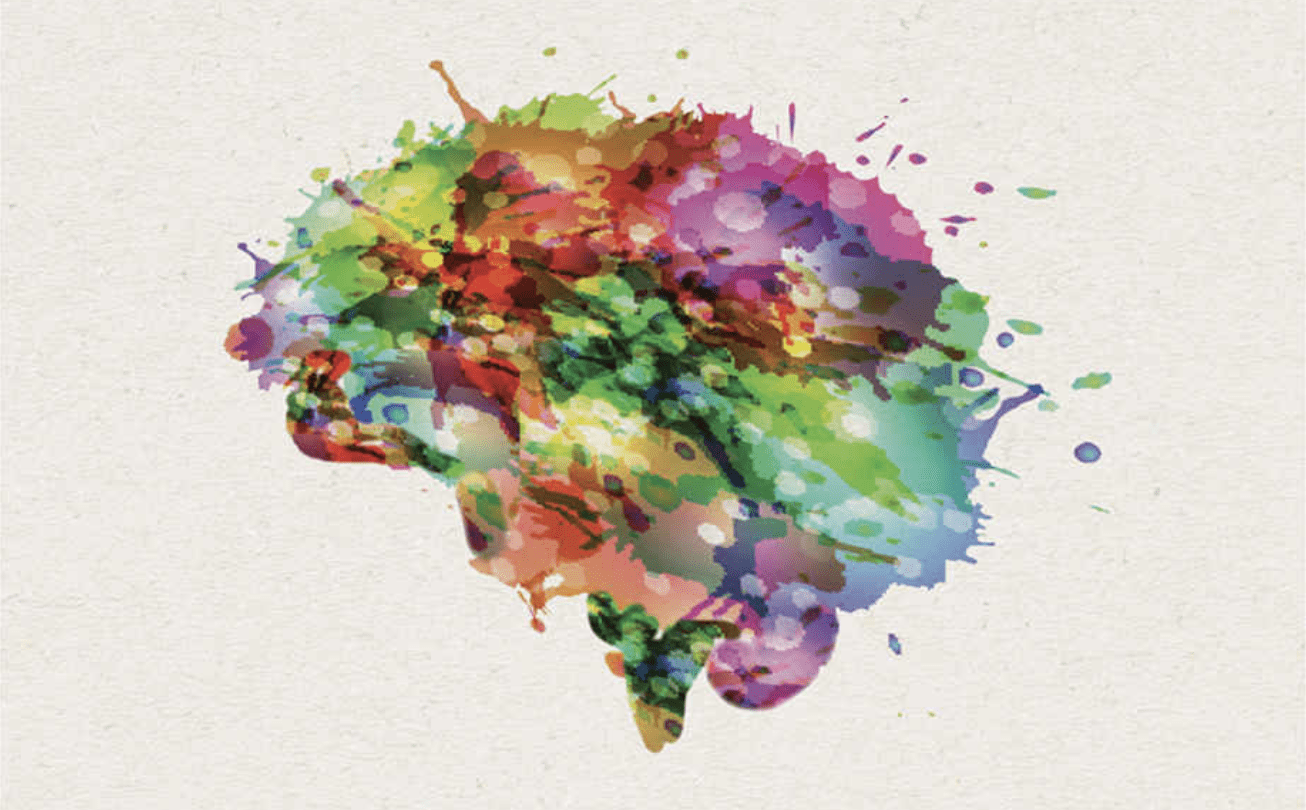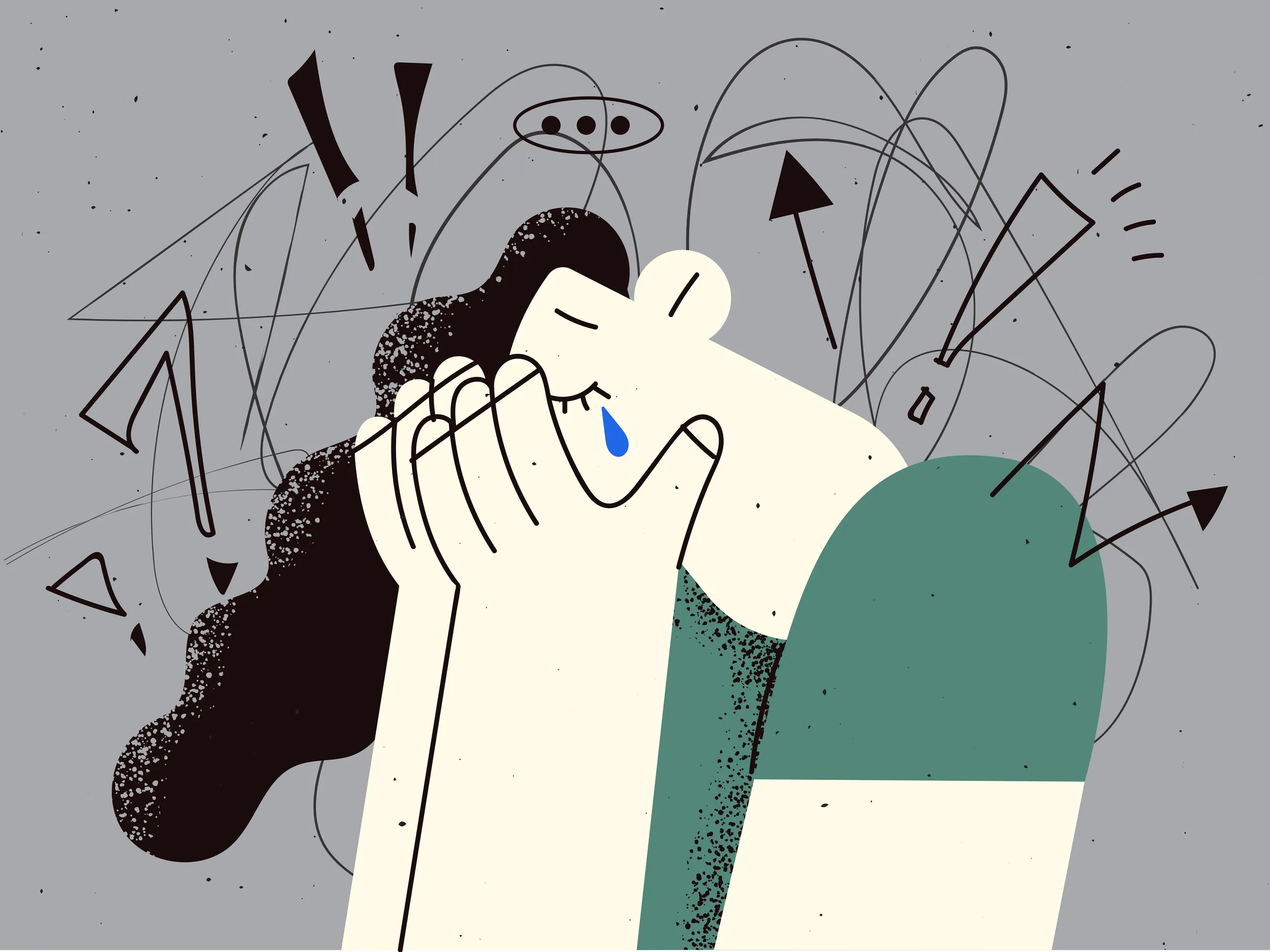THEORY OF CONSTRUCTED EMOTION
 Think about a police officer who has been on the job for 12 hours and is about to clock out. After two cups of coffee, the officer returns to the cruiser and receives a call about a possible prowler. The cop is driving to the crime scene with a red face, a knotted stomach, and sweaty palms. When the police officer returns to the same area a few minutes later, he finds a loitering teen talking on the phone. The teen looks downcast as they catch sight of the cop and runs away. The officer orders the child to hang up, face them, and respond to a series of questions. The officer's perception of the current situation as dangerous may factor in the officer's physiological responses, such as a racing heart, sweating, tense stomach, and flushed face. The officer will likely interpret the situation with the loitering teenager as tense and the teenager as hostile because they do not know the possible causes for these emotions. As a result, the police officer might react violently.
Think about a police officer who has been on the job for 12 hours and is about to clock out. After two cups of coffee, the officer returns to the cruiser and receives a call about a possible prowler. The cop is driving to the crime scene with a red face, a knotted stomach, and sweaty palms. When the police officer returns to the same area a few minutes later, he finds a loitering teen talking on the phone. The teen looks downcast as they catch sight of the cop and runs away. The officer orders the child to hang up, face them, and respond to a series of questions. The officer's perception of the current situation as dangerous may factor in the officer's physiological responses, such as a racing heart, sweating, tense stomach, and flushed face. The officer will likely interpret the situation with the loitering teenager as tense and the teenager as hostile because they do not know the possible causes for these emotions. As a result, the police officer might react violently.
The significance of internal sensations from various sources can influence our experiences and actions. This article emphasises the theory of constructed emotions and their importance in decision-making.
The nature of emotional responses
A feeling is how one's brain interprets the sensory changes that occur in the body due to interaction with the external environment. What matters is not how you feel about the world but rather how we see the world and how your body functions in it.
To begin, let's define the theory of constructed emotion.
The idea is that emotions are not innate. There is no hardwired circuit in your brain that, when triggered, will cause you to behave predictably. Instead, when we need an emotion, our brain conjures one up from a stockpile of versatile ingredients; the neural circuits responsible for this process are identical to those responsible for generating thoughts, memories, and perceptions.
The "classic" theory of emotions
 The conventional view of emotions holds that the animalistic parts of our brains are located deep within. Emotions such as anger, sadness, fear, disgust, etc., have their neural pathways. We all have universally recognised facial expressions and bodily responses triggered by specific neural circuits, such as anxiety. Everyone can make and recognise them instantly, regardless of background or training.
The conventional view of emotions holds that the animalistic parts of our brains are located deep within. Emotions such as anger, sadness, fear, disgust, etc., have their neural pathways. We all have universally recognised facial expressions and bodily responses triggered by specific neural circuits, such as anxiety. Everyone can make and recognise them instantly, regardless of background or training.
Human Feelings as Illusions: A Theory
The classical perspective is reasonable given that Western culture has held that the soul survives death since Plato. Our animal nature wins out when our baser instincts take over and make us do things that go against our morals or cause us physical harm. Because the brain is a bun, scientists tattooed Plato's concepts on it. It's a big grey lump that doesn't require any special tools to design.

The story worked well, and some of the events occur as we might expect if we look at a brain with our own eyes. When we look into the brain with specialised instruments, we find something that goes against this theory. This story is unique compared to what we know about how people feel and react. Specifically, we look into the cultures of other nations. There is debate about our actions, even among members of our culture. When we're frightened, we tend to freeze. A person's normal voice may change to a louder one or a lighter tone if fear causes them to feel threatened.
To begin, you have nothing to worry about. The human brain generates fear in various ways, resulting in many fearful actions. None. To start with, our minds can create a lexicon of feelings. It's only a thought to be afraid of. It can change to suit your needs. Because our brain is always trying to make a move that fits the situation, this is the first step in realising that there are many such variables. Our brains need time to work on this.
Second, why do we have a brain in the first place? While the brain controls our physical functions, it does not influence our mental processes, sensory perceptions, or imaginative capacities. Constantly, this is the case. Our thoughts, feelings, visions, and imaginations do not feel like that to either of us, but that is precisely what is happening. The brain keeps track of how much salt, glucose, oxygen, and everything else the body needs to function correctly. It uses this information to allocate these resources as efficiently as possible. There is more than one system in the human body.
This is very interesting to the minds among us. Our skull sends data from our bodies' sensors, but it has yet to learn what that data means. These perceptual details are not explained by it. Since it has no idea what's going on down there, it must be an underground phenomenon. It doesn't even know who it is. The effect is there, and data is being collected, but understanding the root cause would be helpful.
The brain processes sensations of smell and taste from chemicals transformed by air pressure and light changes. Given that it has no idea what they are, our brain has to account for them in its spending plans. It has to figure out what to do next to keep us alive. Still, it only has access to the results of events. It needs more information about the causes or strategies for achieving its goal. To guess what the sense data mean, our brain engages in a process known as body budgeting, in which it conjures or reinstates past experiences. From infancy to the grave, our brains serve this purpose. To keep us alive, it processes information from our internal and external senses, using knowledge gained over time. There is no awareness of anything.
If time were to stop suddenly, what would occur? The human mind would be processing the recent events and drawing on stored knowledge to predict what would come next:
- What we would see.
- What we would hear.
- How we would feel.
- What would happen to our bodies.
- What we should do.
</ul>
The brain then awaits sense data from the external environment and the body to confirm or refute its predictions, after which the sensations and actions are prepared.
Constructed emotions in law enforcement
Officers in the law enforcement community are frequently put in situations where they must make split-second judgements under intense stress. The stakes are incredibly high, so they can only afford to make mistakes. Decisions in emotionally charged situations can be better understood with the help of the theory of constructed emotion (TCE). So that it can meet both the short-term needs for learning and motor coordination and the long-term needs for growth, survival, and long-term reproduction, the brain's primary function, according to this theory, is to regulate physiological resources predictably.

Going back to our original example, the TCE notes that the officer's subconscious experiences of higher levels of peripheral physiological arousal will predictably affect the officer's perception and behaviour. We will assume that the police officer has yet to be made intentionally unaware of these changes. A person's perception and behaviour are influenced by the presence or likelihood of threats that would necessitate the current level of physical arousal. These predictions are formed based on their emotional state. Two cups of coffee, a request to keep an eye out for a prowler, and the rest of the officer's day have all contributed to his current mood.
Two cups of coffee, a request to keep an eye out for a prowler, and the rest of the officer's day have all contributed to his current mood.
Dzhokhar Tsarnaev, a Chechen man and the only person found alive after the 2013 bombing of the Boston Marathon, was tried, convicted, and sentenced to death. The jury decides between life in prison and the death penalty based on whether or not the defendant expresses remorse for his actions. Tsarnaev apologised, but the jurors saw a stoney glare when they looked at his face.
There is no doubt that Tsarnaev is responsible for the bombings. Still, the jury seems incapable of perceiving his remorse or other emotions. Not even you or I can do that. We base our understanding of other people's feelings on our best-educated guesses. So, we interpret the expressions on a person's face as if they were words on a page. But our minds are constantly making predictions. One must draw on prior knowledge of analogous situations to make sense of something. And what's with the stone face?
Even if Dzhokhar Tsarnaev is a cold-blooded killer, he may be displaying the stoic acceptance of defeat typical of Chechen culture by keeping a stone-faced expression on his face. The takeaway is that your mental processes play a role in projecting your emotions onto others. This is not the case in the courtroom, lecture hall, and boardroom.
Constructed emotion in medical diagnosis
Medical practitioners are often tasked with determining not only the patient's physical but also their mental health. What matters now is not the diagnosis itself but how the practitioner's diagnosis is affected by the inference of another person's emotional state. And this is where we find the objective judgement with something far more nuanced, something that scientists have concluded we must be accurate in recognising. How can we let our erroneous assumption about a patient's emotional state influence our assessment of their condition? Then why is there a problem? Neither of us can put our finger on the slight feeling.
Conclusion
It's essential to recognise the impact of background knowledge and circumstances on emotional expression. There is more at play here, and we should remember that feelings are not easily assessed in advance. We will have accepted social diversity if we can do the same for differences in how people feel. It's common knowledge that we all feel emotions and communicate them uniquely. The question is whether or not to recognise variations in how we express them.
